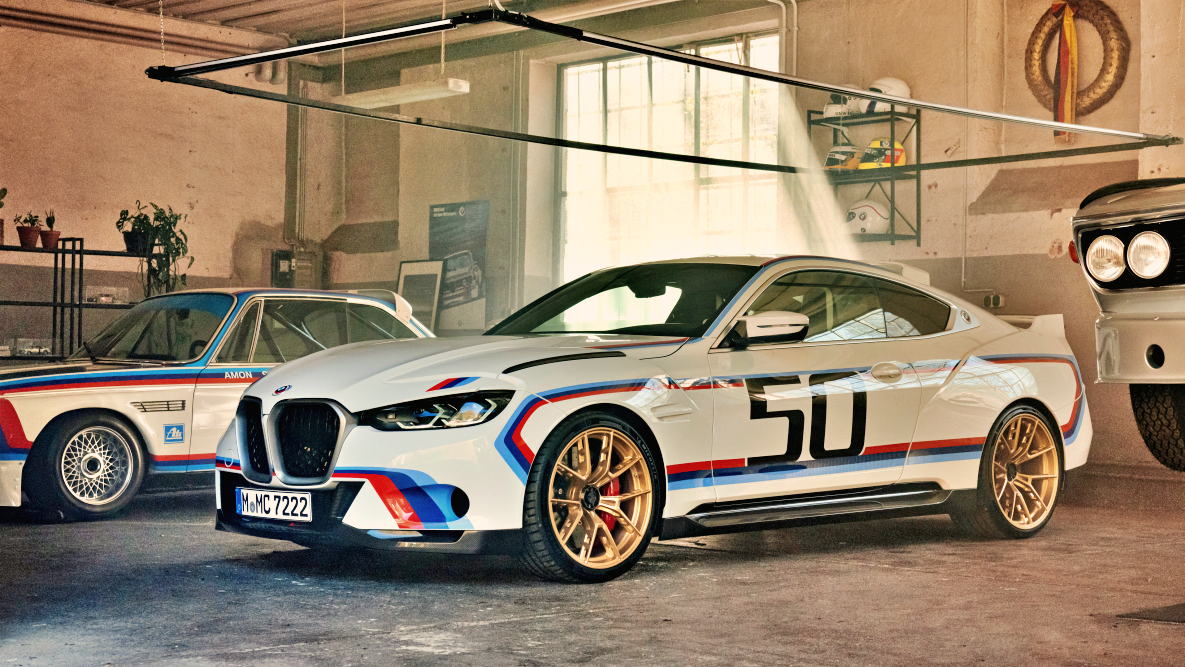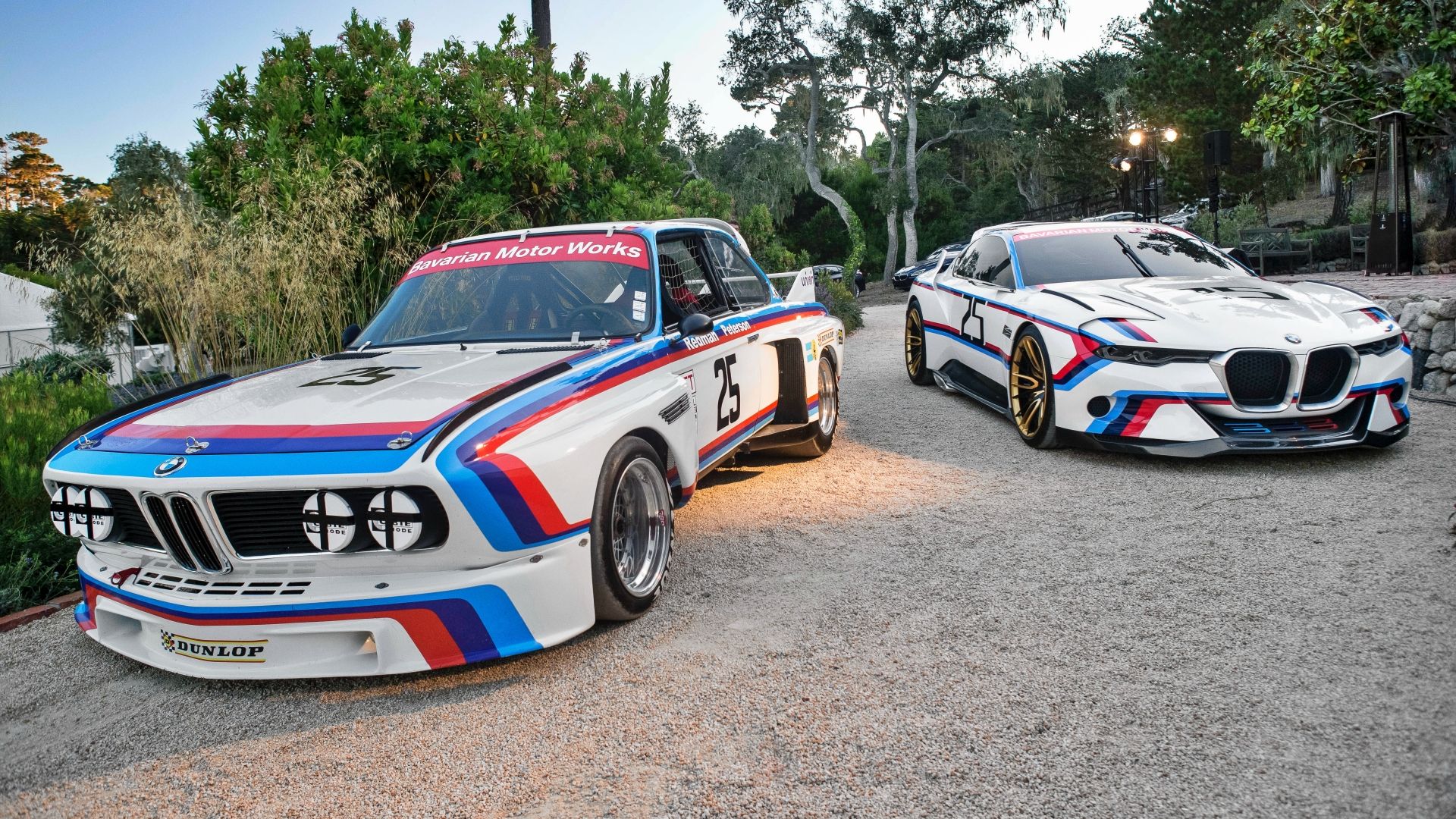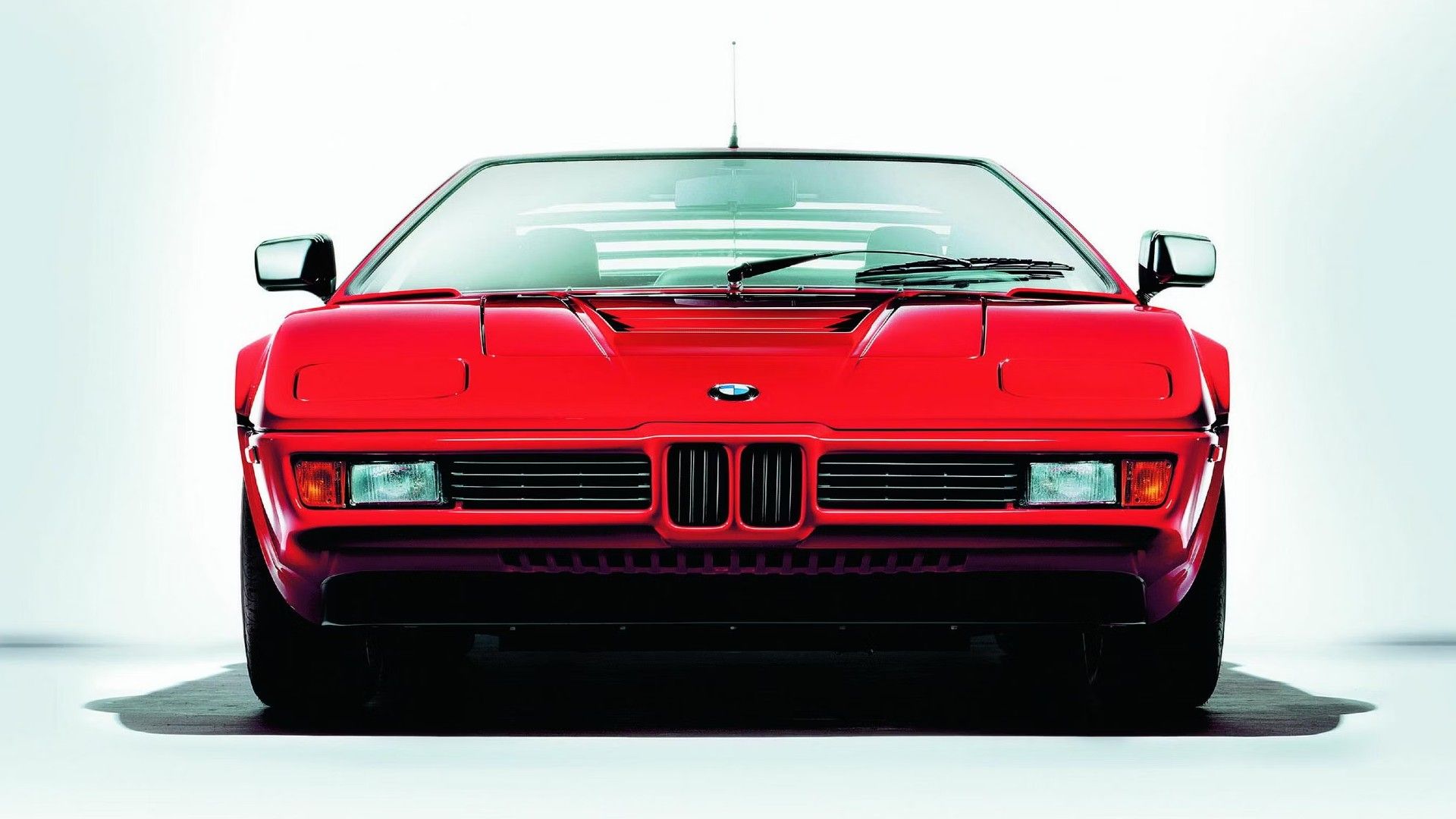Summary
- BMW M Division, the brand's top-performance line of vehicles, has been around for over 50 years and includes a range of cars from coupes to SUVs.
- The BMW M1, the first badged M car, is a classic and iconic mid-engine sports car that was produced from 1978 to 1981.
- The present lineup of M cars includes the powerful F90 M5, the affordable F87 M2, and the luxurious F92 M8, showcasing BMW's commitment to peak performance in various configurations.
Today, the German brand that is BMW, is a name synonymous with dynamic driving thrills. The acronym actually stands for Bayerische Motoren Werke GmbH, roughly translating to mean the Bavarian Engine Works Company, as the brand's origin lies in the German state of Bavaria. The year 1916 is considered the automaker's founding year, as a successor to another named company, lending over 100 years of enthusiastic existence towards the pleasure of automobile operation.
For BMW M, M meaning Motorsport, began as BMW Motorsport in 1972. Being renamed BMW M in 1993, means that the BMW M Series has now been around for over 50 years, nearly half of BMW's existence alone. Given the name, the M Series signifies the brand's top-performance line of vehicles. Over time, the M Series has evolved to even include the SUV, apart from sports cars. Indeed, cars being: as coupes; sedans; or wagons, along with SUVs, have all sported the legendary M badge.
BMW Motorsport: The Origins Of The Mad Machine
BMW Motorsport was seeded to back racing pursuits. The first touring coupe was the 1970 3.0 CSL, also known as the "Batmobile." CSL stands for "Coupé Sport Leichtbau," or "coupe sport lightweight," simply meaning lightweight construction. Running from 1972-1975, this was the E9 3.0 CSL.
It ran the then-fastest lap at the Nürburgring Nordschleife, the world's renowned supercar proving grounds, for a production car. It was the 1973 version that eventually became called the "Batmobile," due to large spoilers or wings, and flared fenders that were part of an aggressive aerodynamics package. The peak development of this car in 1973 meant features such as this:
- 3.2 liter displacement
- Naturally aspirated inline six-cylinder
- 206 horsepower
- 2,800 pound curb weight
The race car version at one point came to have nearly 800 horsepower, resulting in an utter dominant career, despite not being dubbed an official M car. Everything has a beginning somewhere, and that usually starts off small, something that the lightweight "Batmobile" lives up to in a grand way.
The First BMW M Car And Significant Successors
It was 1978's BMW M1, or E26, to naturally be the first badged M car. The BMW M1 is not only a classic, but an icon. This was the first and only mid-engine sports car for BMW, at least until the i8 hybrid came along. It was also made famous through the world-renowned art of Andy Warhol. With only a few years of production until 1981, a run that saw 450 units total, this only cemented the status of the car with such features:
- 278 horsepower engine
- 3.5-liter four-valve
- 3-foot 9-inch height
The BMW M3 is likely the next important M car, specifically 1986's E30. As far as icons, this could be the frequent favorite for many a BMW enthusiast. With 192 horsepower out of a mid-size car, from a 2.3-liter four-cylinder, this was respectable for the time. The Motorsport division had to sell 5,000 units that were street-legal before this car could be used as intended, as a race car.
This feat was accomplished quite easily, as more than 17,000 were sold globally over the production lifespan, and a few years down the road saw the BMW M3 win nearly every touring car title. This led to legendary racetrack status as well, as the M3 had over 1500 overall race wins. In addition to the M1 and M3, other milestone-type cars include:
- 2007 BMW M5 Touring (E61)
- 2009 BMW X6 M (E71)
- 2019 BMW M2 CS (F87)
- 2021 BMW i4 M50 (G26)
If the CSL 3.0 is the start, the M1 is the original icon, and the M3 is the most popular, then the several vehicles listed above also hold their special place in BMW M Series history. Despite being much more recent, the M5 Touring featured 10 cylinders and 507 horsepower, while only 1,000 units were produced. This makes the sport wagon certainly a collector already, although notably never making its way to North America, as only the sedan was made available in the United States.
The X6 M crossed over into the seemingly impossible, pioneering the sports car with an SUV body. This vehicle featured a V-8 paired with a six-speed automatic sport transmission, a massive 555 horsepower, and an all-wheel drive setup. Remember this is 2009.
Ten short years later, we come to the M2 CS, the abbreviation meaning "Competition Sport." As if the name said it all, this car equips a bi-turbo inline six-cylinder, producing 450 horses. Also included was a cornering tuned chassis, and a light curb weight, thanks to numerous carbon fiber components. Last but not least, we have the very recent i4 M50, set to make a name for itself as the first M-badged BMW with an electric motor. In fact, the i4 as a whole might be the most underrated electric car of 2023.
Past & Present Peak BMW M Cars
After the 3.0 CSL "Batmobile" and the iconic M1, we have several other important M division rides. These include the 1984-1989 E24 M635CSi, as well as the 1986-1988 E28 M5, with 1979 marking the first M-badged 5-Series. However, perhaps more significant is the 1990 E30 M3 Sport Evolution, a car based off of the original M3. This was an evolved M3, a zenith car if you will. It featured: a larger 2.5 - four-cylinder making 235 horsepower; adjustable front and rear spoilers; a modified suspension; and a curb weight 77 pounds lighter.
Another one of the best M Series road cars is the 1993-1997 E31 850CSi. Though technically not an M car, it certainly applies all the M Series formula. Still developed by BMW M, it utilized a lowered sport suspension, variable throttle linkage, and RPM limiters, as well as distinctive front and rear spoilers. This was the original 8-Series lineup, one that led to the eventual M8 coupe.
BMW 8-Series Original Lineup
Trim | Engine Specs |
840 Ci | 282 horsepower 4.0 liter V-8 |
850i | 296 horsepower 5.0 liter V-12 |
850Ci | 322 horsepower 5.4 liter V-12 |
850CSi | 376 horsepower 5.6 liter V-12 |
The top dog 850CSi can be thought of as the M8 that nearly happened, and one can see the various types of engines and horsepower specifications that M-badged cars can have, all depending on the vehicle application. Other BMW M cars that are the most roadworthy include:
- 1993-2003 E36/8 M Coupe
- 2000-2003 E39 M5
- 2003 E46 M3 CSL
- 2011 E82 1-series M Coupe
- 2016 F82 M4 GTS
We've touched upon the M5 Touring sport wagon, as well as the X6 M SUV, two vehicles that could also be considered here. The year 2003 appears to be particularly important for the M Series, as it includes the E36/8 M Coupe, as well as the E39 M5 and the legendary E46 M3 CSL. The M Coupe was based on the Z3, with a 4.8 second zero-to-sixty time, and 162 governed mph top speed. Using the E46 M3's engine, made possible for such performance specs. Speaking of that M3, it used a 3.2 liter inline-six, making up to 360 horsepower in the CSL variant.
Borrowing its name from the legendary original, it weighed just over 3000 pounds. This was enough for a 4.9 second 0-62 mph time, as estimated by BMW. Finally, the M5 is important because it brought V-8 power to the M Series, for the first time in 1998. This 2003 M5 has a 5.0 liter V-8 making 394 horses, along with 368 pound-feet of torque. This was enough for a 4.8 second 0-60 mph time, making the M5 faster than the M3.
The 1-series M Coupe was actually smaller than the contemporary M3, significant in a time when vehicles were becoming increasingly larger. This car used a modern twin-turbo 3.0-liter inline-six, making 335 horsepower and 370 pound-feet of torque, hitting 60 mph in just 4.5 seconds. The top speed was electronically limited to 155 mph, and it had an all-aluminum suspension, originally developed for the E92 M3 peer.
Last but not least, we have the very special M4 GTS, a car that only 300 Americans got their hands on. It had an innovative water-injection system and a twin-turbocharged inline-six with 493 horsepower. This GTS went around the Nürburgring in seven minutes and 28 seconds, as well as the Virginia International Raceway in 2:52.9. Having 68 more horsepower than the standard M4, the GTS was 24 seconds faster on the German track, and almost eight seconds quicker in Virginia.
The Present That Leads Into A Fast Future
There are a few current M cars that are leading the pack today. These are the F90 M5, F87 M2, and the F92 M8. Powered by a twin-turbo 4.4 liter V-8, the M5 makes 600 horsepower and 553 pound-feet of torque, running on 24.5 psi of boost. It'll hit 60 mph in 3.2 seconds, but equipped with a new M-specific all-wheel drive (AWD) system called xDrive, drops that time to 2.8 seconds. As one of the fastest M cars ever, the M5 is undoubtedly now faster than an M3, which perhaps the higher designation alone suggests.
The M2 is a sub-$60,000 car, a bargain for the performance. This rear-wheel drive coupe debuted with a 3.0-liter straight-six cylinder, making 365 horses at 6,500 rpm. A six-speed manual is standard, and a Competition variant boosts the output to 405 horsepower, while a CS version makes 444. The CS uses the M4's twin-turbo six cylinder mill.
Then there's the M8, finally arriving in 2019 to be the king of the M Series. The twin-turbo 4.4 liter V-8 makes 600 horses at base, boosted to 617 in the Competition model. With the xDrive AWD it'll hit 60 mph in 2.5 seconds, with a 10.7 seconds quarter mile at 129 mph. The M8 Competition may be the Apex M Series vehicle, but today many can be had.
Without a doubt, one can have peak performance BMW in any configuration today, be it: a coupe; convertible; gran coupe; sedan; AWD xDrive; roadster; or even SUV. With electric vehicle performance in the i4 M50 and beyond, the M Series even delves into the fast-approaching future, making it one that is already here as far as BMW Motorsport is concerned.



